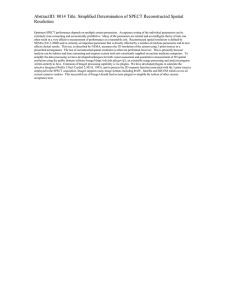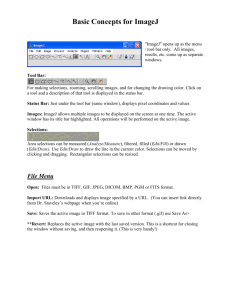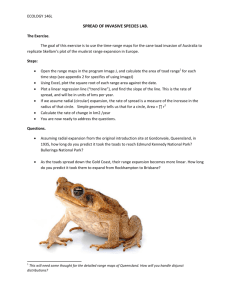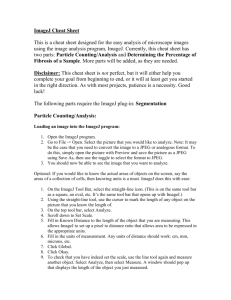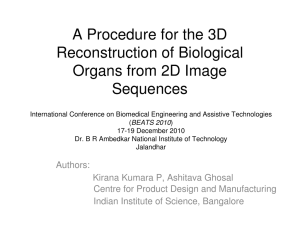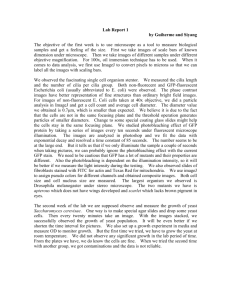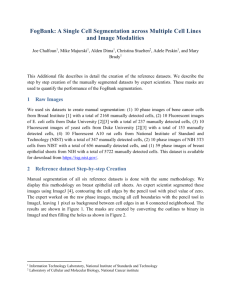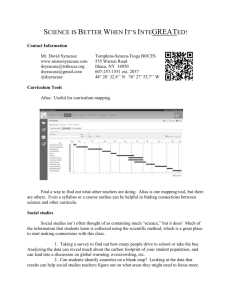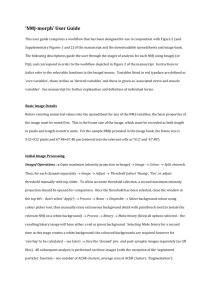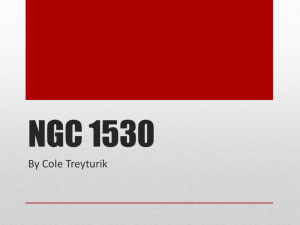First Steps In Image Analysis
advertisement
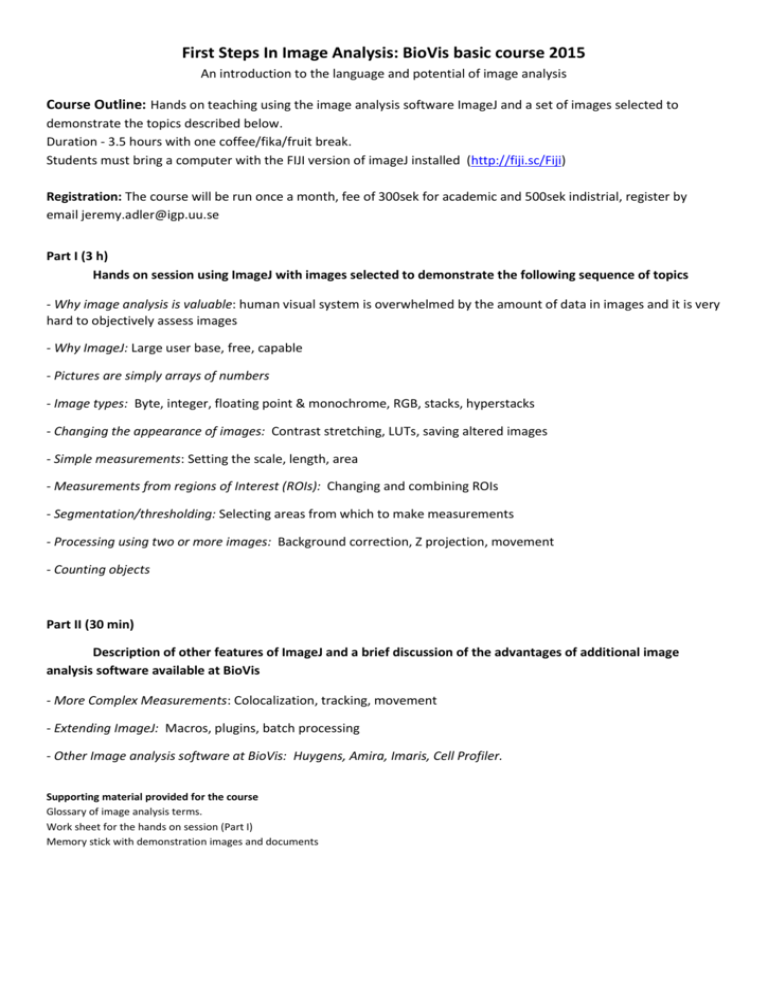
First Steps In Image Analysis: BioVis basic course 2015 An introduction to the language and potential of image analysis Course Outline: Hands on teaching using the image analysis software ImageJ and a set of images selected to demonstrate the topics described below. Duration - 3.5 hours with one coffee/fika/fruit break. Students must bring a computer with the FIJI version of imageJ installed (http://fiji.sc/Fiji) Registration: The course will be run once a month, fee of 300sek for academic and 500sek indistrial, register by email jeremy.adler@igp.uu.se Part I (3 h) Hands on session using ImageJ with images selected to demonstrate the following sequence of topics - Why image analysis is valuable: human visual system is overwhelmed by the amount of data in images and it is very hard to objectively assess images - Why ImageJ: Large user base, free, capable - Pictures are simply arrays of numbers - Image types: Byte, integer, floating point & monochrome, RGB, stacks, hyperstacks - Changing the appearance of images: Contrast stretching, LUTs, saving altered images - Simple measurements: Setting the scale, length, area - Measurements from regions of Interest (ROIs): Changing and combining ROIs - Segmentation/thresholding: Selecting areas from which to make measurements - Processing using two or more images: Background correction, Z projection, movement - Counting objects Part II (30 min) Description of other features of ImageJ and a brief discussion of the advantages of additional image analysis software available at BioVis - More Complex Measurements: Colocalization, tracking, movement - Extending ImageJ: Macros, plugins, batch processing - Other Image analysis software at BioVis: Huygens, Amira, Imaris, Cell Profiler. Supporting material provided for the course Glossary of image analysis terms. Work sheet for the hands on session (Part I) Memory stick with demonstration images and documents
